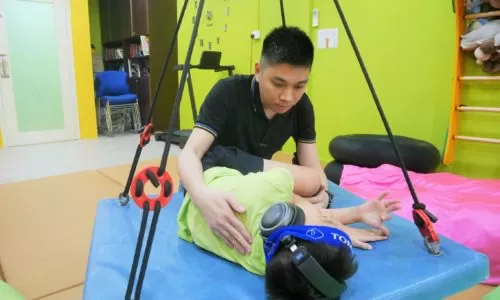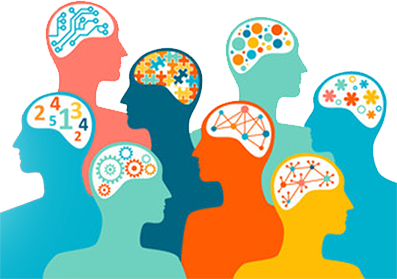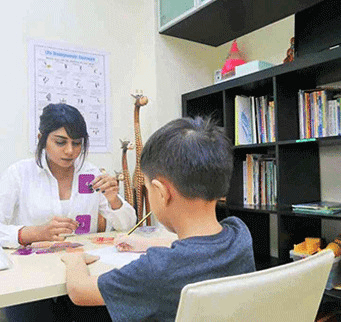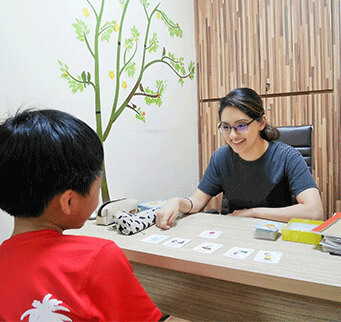Singapore Brain Development Centre
Our Location
1 GOLDHILL PLAZA #01-11 S(308899)
DEVELOPING YOUR CHILD’S 7 SENSES WITH SENSORY INTEGRATION


Developing Your Child’s 7 Senses with Sensory Integration
Sensory integration is a process by which the brain receives information through sensory input, organizes it and uses it for everyday activities. Some of these sensory inputs include sight, smell, hearing, movement, taste and others. Sensory processing provides a crucial foundation for later, more complex learning and behavior in children. It is also known as motor skills development, part of the developmental markers for babies and children when they go for pediatric checkups.
Sensory integration starts from birth. A newborn can see, move hands and feet and these skills continue to develop in the course of ordinary childhood activities. Motor skills development is a natural process where a child adapts to incoming sensations. For most children, sensory integration is a process that develops as they grow. For some, these senses do not develop as quickly as they should. When this process is delayed, some problems in learning, development, and behavior may occur.
Sensory processing is measured by achievement of milestones to gauge if the child is developing without any limitations. The neural systems must work together for effective sensory processing. Some kids may have delayed development in certain areas more than others. For instance, one child can start walking at 12 months while another may take 18 months.

Sensory Integration: Understanding the Body’s 7 Senses
To better understand this phenomenon, we need to look at the sensory system of the body. There are 7 senses that help us process and respond to the world around us. These are:
1. Visual Sense
This is the ability to understand and interpret what is seen by using our eyes to receive and process information about light and dark, color and movement. Eyes use the reflections of objects by light in the visible spectrum to perceive the environment around the body. It is possible for a child to have perfect 20/20 eyesight but struggle with perceiving his or her surroundings.
2. Auditory Sense
The auditory system uses the outer and middle ear to receive noise and sound information. The ears receive information through vibrations about what they hear and transforms them into nerve impulses that pass this information to the brain: the volume, pitch, rhythm and distance or closeness of the sounds. When the noise or sound experienced is too loud and reaches painful decibel levels, your child will cover their ears and express discomfort.
3. Gustatory Sense
This is the ability to taste in the mouth. The tongue receives taste sensations and detects the chemical makeup of the substance to determine if it is pleasant or unfavorable. Kids won’t eat some foods because of how they taste, and how their gustatory senses perceive them to taste. You child may even gag or spit out these foods that they find horrible tasting. This sense works in tandem with a child’s sense of smell to communicate to the brain through nerve stimulation.
4. Olfactory Sense
Also known as the ability to smell, the body uses the nose to receive information about particles in the air to determine whether the scent is pleasant or harmful. If a smell is dangerous or unpleasant, the child reacts by turning his nose away, moving away from the smell, pinching his/her nose, or sneezes as a body reaction. This sense also grows to sense pheromones in the air and from other humans.
5. Tactile Input
This is the sense that interprets information coming into the body by the skin. The skin has receptors that receive touch sensations like pressure, pain, and heat. The development of this sense may look like a messy room or situations where a child has strewn through toys or different textures such as sand or water and has made a ‘mess’. This sense is why children react very quickly, either positively or negatively, to touch. Children diagnosed with Tactile Defensiveness or Hypersensitivity Disorder have touch receptors that react adversely or negatively when touched by people or objects that do not hurt for a normal child.
6. Proprioceptive Sense
Also understood as kinetics of the body, this sense refers to the body’s ability to interpret sensations of movement from our muscles, joints, and ligaments. The body uses information from nerves on the muscles and bones to convey messages about the position and movement of the body through muscle contractions, straightening, pulling and other body movements. This sense is responsible for telling the brain what position the body is in, be it while pushing, pulling, squeezing, climbing or stretching. These also translate to how alert a child’s mind is of his/her body reactions in the environment and how they respond with personal or physical boundaries.
7. Vestibular Sense
This sense dictates balance and movement – it works together with the proprioceptive sense. The vestibular system uses the inner ear canals to receive information about movement, direction changing, and gravity pull. Without proper balance in the body, it would be hard to walk or maintain a straight posture. The vestibular sense is also responsible for visual tracking, how a child maintains a steady visual image of a moving object, or repeatedly reading words on a whiteboard, and then looking back down at their worksheet successfully.
How Do I Know If My Child Has A Sensory Issue?
Your child may have sensory / motor integration issues if they show signs of:
- Difficulty in regulating behavioural and emotional responses
- Avoids bright lights
- Does not smell strong odours
- Fidgets continuously
- No safety awareness when playing
- Not aware of pain or temperature
Read about more signs of sensory processing disorders here.
If left untreated, what can issues with sensory integration lead to?
Children with sensory integration issues will have difficulties in their academics as they are unable to attend to tasks for an extended period of time. They will be unable to interact and communicate with others properly as they cannot regulate their emotions in a socially-acceptable manner. Furthermore, children with sensory integration issues will have weak fine motor skills and self-care skills including eating, brushing teeth, bathing and eating.
What Can You Do to Develop Your Child’s Sensory Processing and Motor Skills Development?
Kids develop motor skills at different rates but when you realise that your child is struggling to hold a pencil or grasp utensils, you will need to improve and train these sensory processing skills for your child:
- Teach your child how to grasp things using his thumb and forefinger. This could be as simple as picking out large cookies from a jar and feeding himself or picking out differently colored tiny M&Ms when asked.
- Practice stacking games that increase hand and wrist stability. Start with a small light block and work up to bigger, heavier interlocking blocks as children grow and learn how to play on their own with such toys.
- Work on buttoning shirts and tying shoelaces. Encourage and teach your child to button/unbutton and tie or attempt to tie their shoelaces with guidance.
- Encourage your child to use playdough to squeeze, stretch, roll and pinch different shapes.
- Encourage drawing or painting to help your child with his hand-eye coordination and dexterity.
The best way to promote motor skills is to provide your child wide a range of materials for manipulation and work on their creativity through play. Families are advised to seek help from dedicated learning centres for specialized activities and therapy created for the purpose of developing these 7 senses in children.
When should you seek sensory integration therapy for your child?
Read more about our Sensory Integration Program here – our team of experts devise an individualized one-to-one therapy plan that includes both play-based and sensory-rich elements. Active parental support also helps in conducting follow-up activities at home and weekly feedback ensures your child’s growth is our focus.






